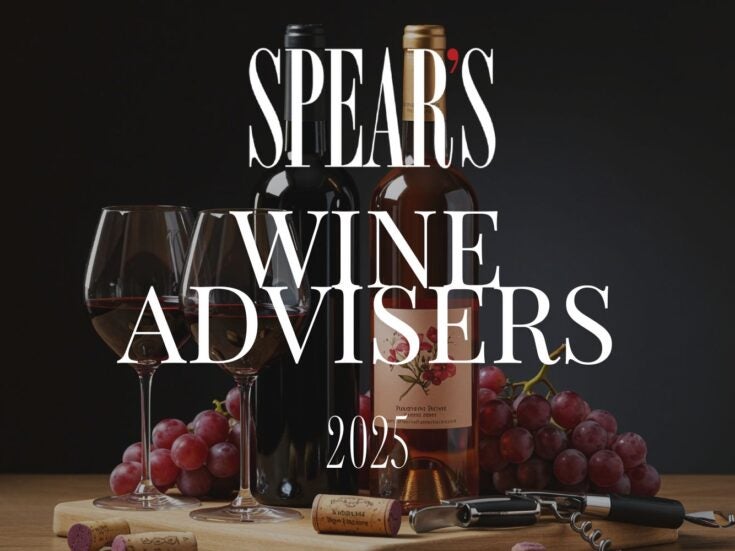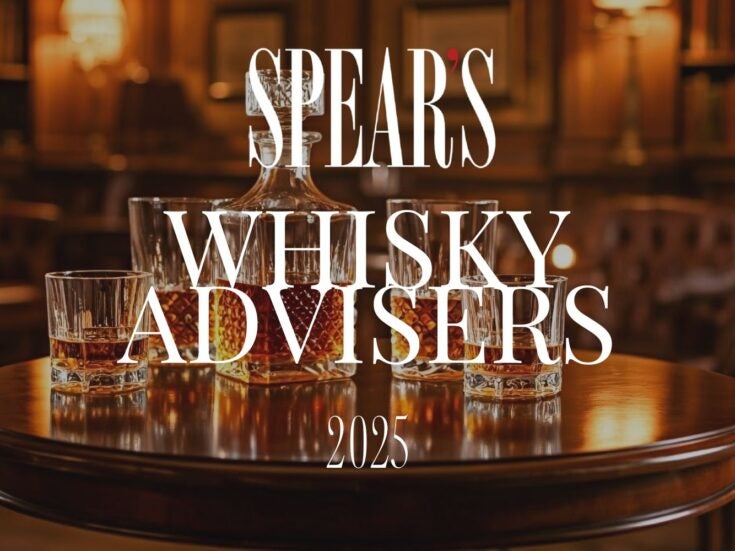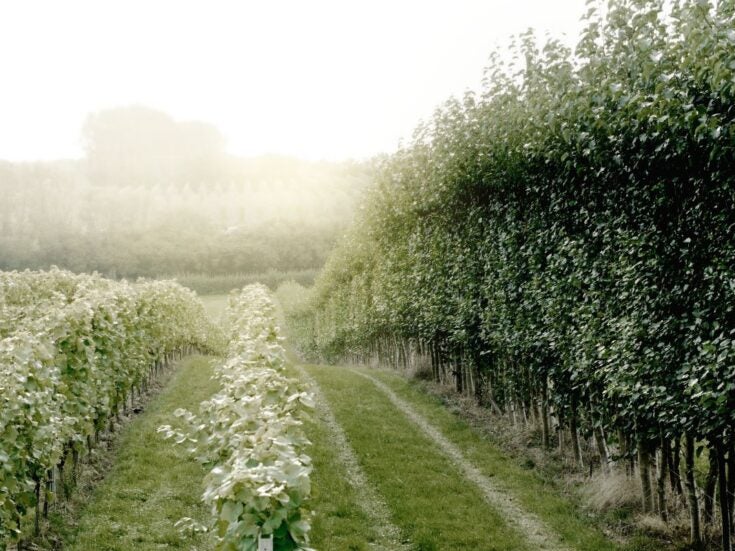
Get fobbed off with a pricey bottle of bogus Bordeaux — of which there’s more and more about — and you’ll feel like a right plonker, says Jeremy Hazlehurst
EVER SINCE PLINY complained about wine forgery — and probably before — in vino veritas has taken on a new meaning: worry less about pouring out the truth once you’ve imbibed and more about pouring the true liquid into your glass. No doubt Romans sat about sniffing doubtfully at their goblets of the most famous wine of antiquity, the 121 BC vintage of Falernian, while Thomas Jefferson, who toured Bordeaux in 1787, told friends to buy direct from vineyards to ensure it was the real deal. The appellation contrôlée system was introduced so that you knew what you were drinking. But the counterfeiters are always with us, and now we are living in another golden age of wine forgery.
The reason is money. The price of Bordeaux has rocketed in recent years. According to Bordeaux Index, a London wine merchant, a broad basket of Bordeaux wines would have got you a compound annual growth rate of 13 per cent since 1985, way above the FTSE and even gold. Some years it has returned over 20 per cent. An investment in 2005 would have outperformed gold by September 2010. Had you bought a case of Lafite in 1996 it would have cost you £600, and now it goes for around £12,900, while the 1982 has gone from £250 to £37,000 — an increase of 14,700 per cent. Those numbers are as attractive to forgers as they are to investors.
Behind these numbers is China. Last year Farr Vintners, another London merchant, sold a whisker under 50 per cent of its wine by value to the Far East, almost all of it Bordeaux and Burgundies. The real action is with the premier cru Bordeaux, and especially Lafite, which has an incredible cachet in China. Although it has an advantage as the most famous of wines, Lafite has also wooed the Chinese mercilessly. When, in October last year, it announced that the label of its 2008 vintage would feature an etching of the Chinese figure for ‘eight’ — a lucky number in China — the price for a case rose in 24 hours from £8,500 to £10,160.
Buyers are gradually starting to look beyond Lafite — sales of two other premier cru Bordeaux, Margaux and Mouton, were both up 100 per cent in January compared to the same month last year. But they rarely go beyond the top Bordeaux, and this intense focus on a small number of brands with massive prices is a huge opportunity for forgers. Johnny Goedhuis from wine merchant Goedhuis & Co, which has an office in Hong Kong, says: ‘In excess of £1,000 a bottle you are talking about it [forgery] being worthwhile.’ This now covers a lot of wine.
FORGING WINE IS frighteningly easy. ‘It’s a wooden box, it’s a bunch of bottles, and their labels, and there’s something in it,’ says Gary Bloom, MD of Bordeaux Index. In the Eighties and Nineties the wine market was flooded with fakes — magnums of Pétrus from years when none were produced, or even bottles of ‘Pétru’. In one notorious case Bordeaux winemaker Laurent Ponsot stood up at the back of an auction and announced that the wines for sale — from his vineyard — had never been made. Even now 1947 Cheval Blanc Imperials come up for sale, although this wine was never produced.
At its crudest, wine forgery is simply a question of copying the labels of expensive wine and sticking them on bottles of something else. This is relatively easy if your buyer is unsophisticated — you can buy joke 1982 Pétrus labels on the internet easily enough. In his book The Billionaire’s Vinegar, which investigates the old wine boom of the Eighties, Benjamin Wallace tells of one wine waiter who explained how a subtler fake could be made.

First, find an old empty bottle with an original label. Some winemakers insist that sommeliers smash empty bottles, but all it needs is an unscrupulous wine waiter to spirit them away. And lots of people like to keep them anyway, so there are hundreds floating about. Then you pour in a mixture of other wines, some young, some old. If the tasting notes in the wine books say ‘a hint of crème de cacao’, then pour some in. One sommelier created a list of ‘recipes’ for classic old wines. How tongue-in-cheek this was is unclear. Next, take the cork from a younger bottle of the wine you’re forging using an opener with prongs that go either side of the cork. You then rub off the date and rebrand it with the older one, recork it and add on a new capsule.
It is so easy to do thatforgers probably range from unscrupulous chaps in sheds to international gangs. Most good forgeries, say dealers, are probably being created in Europe — Switzerland is said to be a hotbed — and reach Asia through Indonesia. Even worse, nobody knows how big the problem is. Most forgers assume that the buyer won’t drink it but will sell it on. Soon its provenance is forgotten and prosecution unlikely. Indeed, there have been no prosecutions for fine-wine fraud; better still for the criminals, even when the bottle is opened there’s no certainty that the forgery will be discovered.
Only a few people will have drunk enough 1870 Lafite to confidently declare it counterfeit — and some of those may have been forgeries. It’s hard to be sure — there is variation even between bottles in a case, so complex is the ageing process. In other words, the older, rarer and more expensive the bottle, the easier it is to fake.
So how much wine on the market is counterfeit? Post-1982, ‘One per cent,’ reckons Gary Bloom. The big châteaux, like all luxury-goods producers, take counterfeits seriously, and these days they engrave, emboss and embed chips in bottles and use ultraviolet IDs and banknote-level printing on labels. But the further back and further afield you go, the murkier things get. Some estimate that 20 per cent of old wine is fake. In emerging markets with wealthy, naïve buyers, who knows?

If you’re in the market, especially if you’re buying in Asia, it’s probably best to keep in mind another fine Latin phrase: caveat emptor.
How to avoid being scammed
The key to being safe is using sellers who buy direct from vineyards. The auction houses say they only buy wines with impeccable provenance, and undoubtedly with the big ones that is true. But as merchants point out, auction houses are middle-men who have not invested in the wine. Thus, the best guarantee of authenticity is a reputable merchant.
The professionals want to know whether the wine is still in its OWC (original wooden case), and whether the level of the wine in the bottle (the ullage) is consistent with its supposed age — all wine evaporates over time. If you’re in Asia, look for reputable European dealers, or those with a long reputation — for example from Hong Kong or Singapore, where there’s a good wine culture.
If somebody can’t or won’t tell you where a wine came from, be suspicious. If it’s cheap, be suspicious. Be suspicious of large bottles — sometimes there are more magnums of 1921 Pétrus on sale than were ever produced. Be especially careful about the most-forged wines. According to wineauthentication.com these include Cheval Blanc 1921 and 1947, Lafite 1870, Lafleur 1947 and 1950, Latour 1961, Margaux 1900 and Petrus 1921 and 1947.
Wine merchants Berry Brothers say a bit of homework goes a long way — for example, Domaine de la Romanée-Conti changed its bottle shape a while back. Knowing this could help you identify fakes. If in doubt, call the vineyard and ask them what they think. Of course, the older the wine, the less likely it is to have an impeccable provenance. At the end of the day, as with any investment, buying old fine wine is a question of risk appetite.
Illustration by Russ Tudor






